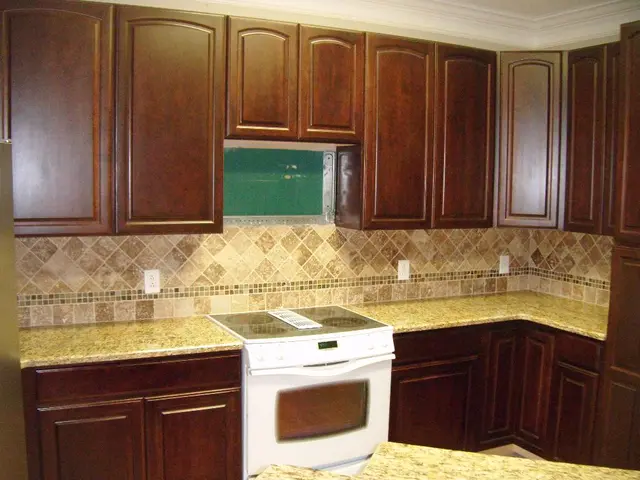Specialized School Focuses on Stone and Composite Material Studies
In the world of contemporary architecture, hybrid stone construction is making a significant impact. This innovative approach combines the timeless qualities of stone with modern materials and methods, striking a balance between sustainability, aesthetics, and performance.
Design Principles
The design of hybrid stone structures is guided by several key principles. Material Efficiency is one such principle, with stone being used only where it is most effective, particularly in compressive areas such as columns and shear walls. This strategy minimises the overall stone volume and the impact on quarrying.
Prefabrication is another design principle that improves quality control, coordination, and reduces on-site construction time. Both stone and complementary materials, like steel and timber, can be prefabricated off-site.
Early Interface Design is crucial in hybrid construction, demanding detailed design of interfaces between materials to avoid construction issues later and optimise assembly.
Structural Typologies vary, with common approaches including stone vertical elements combined with lighter horizontal systems, steel beams with stone columns, or reinforced stone slabs paired with concrete or cross-laminated timber shear walls.
Aesthetic Integration is another aspect of hybrid designs, blending traditional stonework with contemporary elements to create textured façades and forms that celebrate material contrast and regional identity.
Challenges
Despite its benefits, hybrid stone construction presents certain challenges. Complex Interface Design requires detailed engineering and coordination early in the design phase to achieve reliable, durable connections between stone and diverse materials.
Logistical Complexity is another hurdle, as managing multiple materials and prefabricated elements needs stringent planning for transport, storage, and assembly on-site.
Weight and Handling are concerns, even though using less stone reduces weight. Stone elements remain heavy and require mechanised handling, adding complexity to installation processes.
Climate and Material Compatibility is a factor in the selection of hybrid components, requiring careful consideration for durability and thermal performance.
Benefits
Despite the challenges, the benefits of hybrid stone construction are numerous. Sustainability is improved, as the use of stone is limited to where it is structurally necessary, enhancing overall sustainability and reducing embodied carbon.
Construction Efficiency is another benefit, with prefabrication and off-site fabrication improving construction speed, reducing labor demands on-site, and allowing better quality control.
Design Flexibility is a significant advantage, enabling architects to combine the durability and aesthetics of stone with lightweight, high-performance materials, enabling innovative structural and spatial solutions.
Improved Logistics and Scheduling result from streamlined assembly with cranes and pre-planned on-site operations, leading to faster and more efficient building delivery.
Thermal and Acoustic Benefits are derived from stone’s mass, which provides thermal stability and sound insulation benefits when integrated properly, contributing to occupant comfort.
In summary, hybrid stone construction effectively combines the timeless qualities of stone with modern materials and methods, balancing sustainability, aesthetics, and performance while presenting challenges in precision design and coordination.
It's essential to note that construction teams must be trained in working with a diverse range of materials in hybrid stone construction. Efficient construction is a benefit of hybrid stone construction, with proper planning allowing for efficient scheduling, fewer on-site labour requirements, and reduced manual handling.
Hybrid stone buildings can adapt over time as space requirements or uses change, extending their lifecycle. They can also be disassembled for reuse, reducing waste. However, clients need to understand that the design process for hybrid stone buildings is slower and more iterative.
Engineering constraints drive careful material use in hybrid stone construction, resulting in lighter, more resource-efficient structures. Design optimisation is a benefit of hybrid stone construction, as prefabrication requires careful design of interfaces early on, which helps anticipate and resolve construction issues before they arise.
Historically, stone was a preferred material in regions where it was abundant and easy to quarry. Today, hybrid stone construction offers a sustainable and innovative approach to construction, going beyond mixing materials; it involves organising materials hierarchically for maximum performance.
- Hybrid stone construction, when combined with home-and-garden design, can provide a sustainable-living space that harmonizes traditional craftsmanship with modern technology.
- The principles of hybrid stone construction, such as material efficiency and early interface design, can be applied to the lifestyle segment, promoting a sustainable living environment while maintaining an aesthetic appeal.







